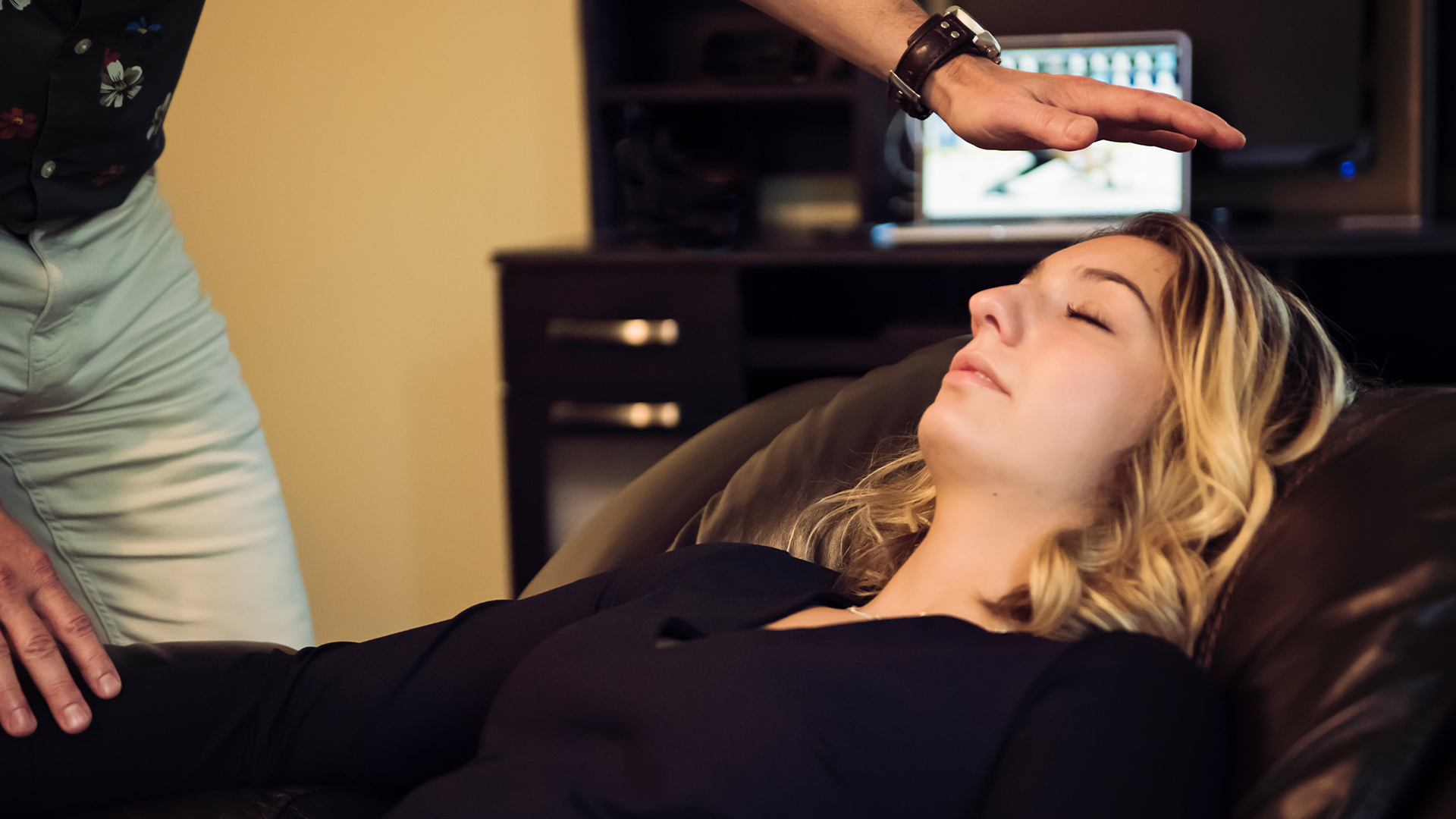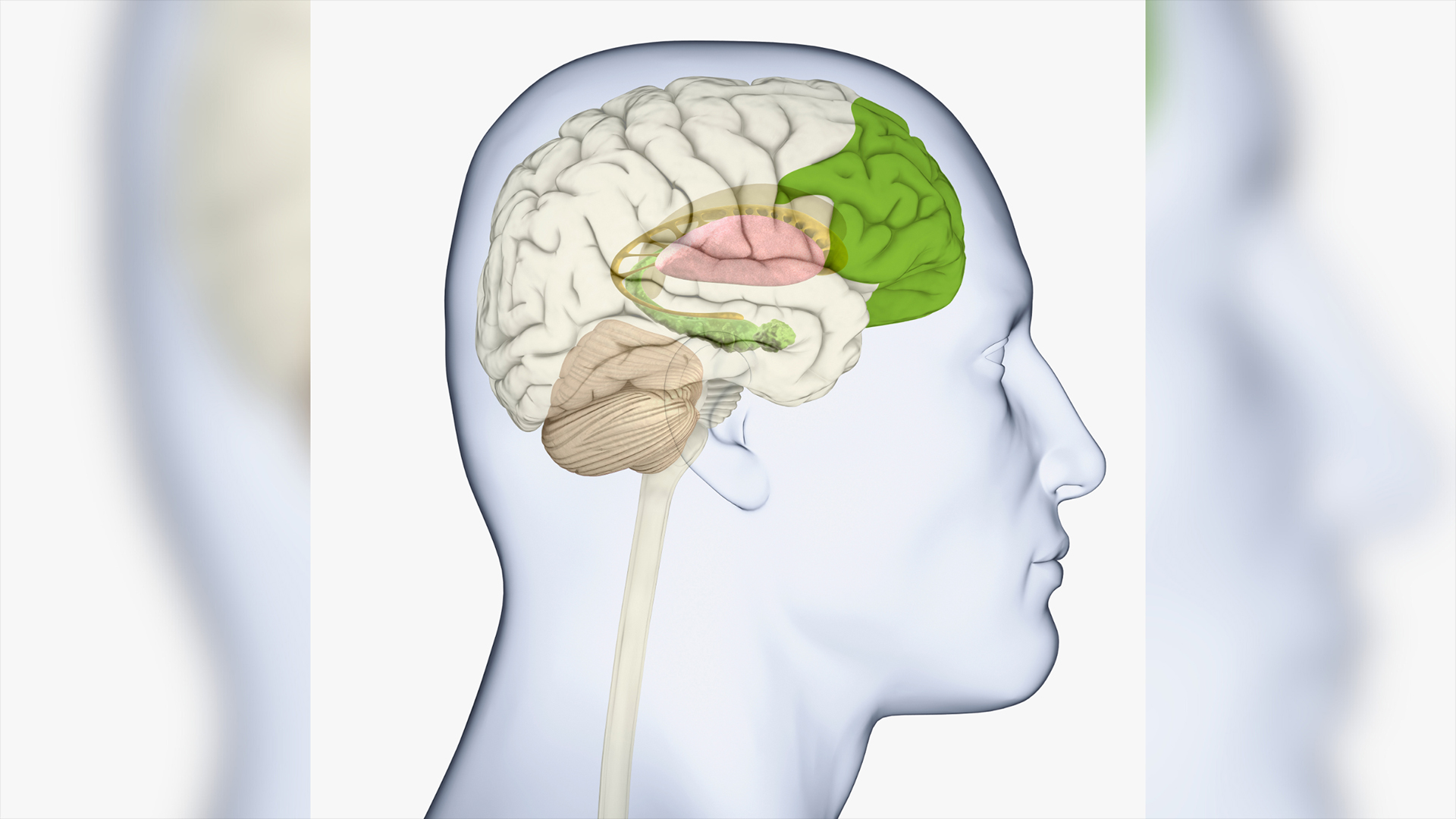Electric pulses to the brain may make people easier to hypnotize
In a new clinical trial, short bursts of brain stimulation briefly made patients with chronic pain more susceptible to hypnosis.

Electrical brain stimulation could temporarily make patients with chronic pain more susceptible to hypnosis, new research suggests. The researchers behind the study argue this could potentially offer patients a safer alternative to long-term opioid treatment for fibromyalgia, a chronic-pain condition.
Opioids are not recommended to treat fibromyalgia under current guidelines. However, despite this, they are still sometimes prescribed to patients with the condition.
In a small clinical trial, scientists briefly applied electrical stimulation through the skulls of volunteers with fibromyalgia. The stimulation increased the volunteers' susceptibility to hypnosis for an hour — a trait that was once thought to be unchangeable.
The authors of the new study, published Thursday (Jan. 4) in the journal Nature Mental Health, believe that such stimulation could someday be used to increase patients' responsiveness to hypnotherapy, which has previously been investigated as a potential approach to treating fibromyalgia, although the data is limited.
As the U.S. contends with an ongoing opioid overdose epidemic, hypnotherapy may also provide a safer alternative to long-term use of these addictive drugs, the authors argue.
Related: Electrical stimulation could treat traumatic brain injuries

"Opioids are very dangerous — yes, they help control pain acutely, but they kill people chronically," Dr. David Spiegel, the co-senior study author and a professor of psychiatry and behavioral sciences at Stanford University, told Live Science.
Sign up for the Live Science daily newsletter now
Get the world’s most fascinating discoveries delivered straight to your inbox.
Hypnosis is when a trained practitioner guides a person into an altered state of consciousness, which typically relaxes them and focuses their attention. The procedure has been tested to treat conditions such as stress and sleep disorders, and it's also been tested as a pain-reliever during surgery and as a method to help people quit smoking.
Around 15% of adults are considered "highly hypnotizable," meaning they'd score either 9 or 10 on a standard 10-point clinical scale of hypnotizability, while two-thirds of adults are "somewhat hypnotizable."
Scientists previously thought that hypnotizability was fixed, meaning your level of hypnotizability can't change. However, Spiegel and colleagues wanted to see whether they could change this by tweaking the electrical activity in people's brains.
Their trial included 80 patients with fibromyalgia who Spiegel said were "low-to-mid-range" in hypnotizability. The researchers used paddles held to the outside of the skull to stimulate a region of the brain called the dorsolateral prefrontal cortex, the brain's executive control region.
Their aim was to increase communication between the dorsolateral prefrontal cortex and part of what is known as the brain's "salience network," Spiegel said. This network acts like an alarm system that tells the brain to pay attention to new stimuli in our environment.
"Coordination between these two regions, the executive control region and the salience region, helps you to concentrate more intently and is something we see with more highly hypnotizable people," Spiegel said.
Related: This light therapy could zap away chronic pain one day
Half of the participants received two 46-second pulses of electricity to this region, while the others acted as a control group and didn't actually receive stimulation to the brain. Clinicians assessed each individual's hypnotizability before and after treatment. Patients had to follow a series of instructions during the hypnosis attempt, and their responses were rated out of 10.
Those who received stimulation showed a significant increase in their hypnotizability score compared with the control group, going up by about one point on the scale, on average. These effects lasted for only an hour, but Spiegel thinks that, with further refinement, the treatment could be useful for pain relief.
Hypnosis is not a treatment in itself, but more like a stepping stone: "Obviously the goal is not to get a bunch of people hypnotized, but to get them to use it to solve a problem and with fibromyalgia, it's pain," Spiegel said. Hypnosis can be used to help shift people's sensations, perceptions, thoughts or behaviors. When paired with talk therapy, it could potentially increase people's cognitive flexibility and receptiveness to new ideas, Spiegel said.
The authors plan to test longer lengths of stimulation to see if they observe greater improvements in hypnotizability, in terms of duration or greater increases on the 10-point scale.
Eventually, they'd like to see it developed into a clinical procedure that combines brain stimulation with hypnosis to reduce or eliminate pain.
This article is for informational purposes only and is not meant to offer medical advice.
Ever wonder why some people build muscle more easily than others or why freckles come out in the sun? Send us your questions about how the human body works to community@livescience.com with the subject line "Health Desk Q," and you may see your question answered on the website!

Emily is a health news writer based in London, United Kingdom. She holds a bachelor's degree in biology from Durham University and a master's degree in clinical and therapeutic neuroscience from Oxford University. She has worked in science communication, medical writing and as a local news reporter while undertaking NCTJ journalism training with News Associates. In 2018, she was named one of MHP Communications' 30 journalists to watch under 30. (emily.cooke@futurenet.com)










